Oak bonsai: description and care
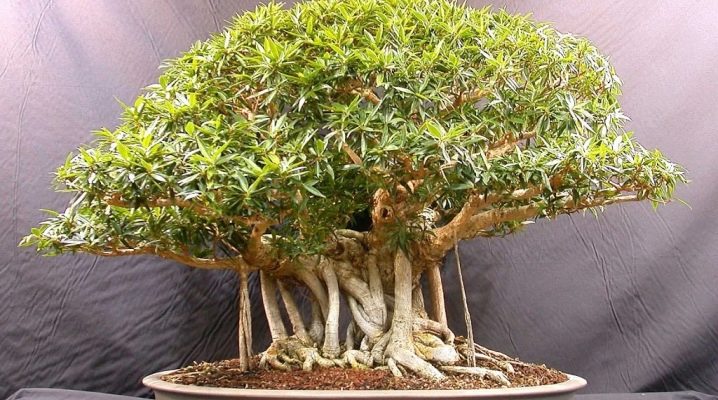
Translated, the word "bonsai" means "growing in a tray." This is a way to grow miniature copies of trees indoors. Oak has been used for this purpose for a long time and quite effectively. In nature, the plant has a lush crown and large growth, which causes certain difficulties in the formation of bonsai from oak.
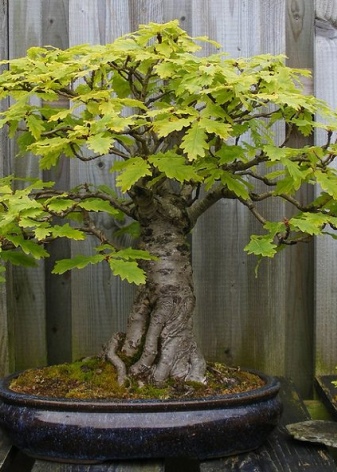
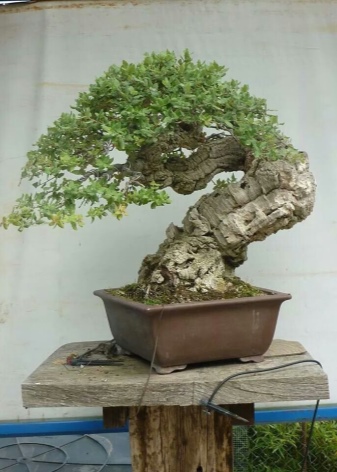
What is required?
It is not easy to create a bonsai from this tree: the rough and hard texture of the bark, large leaves cause difficulties in the process. But if you follow the rules, apply effort and have patience, it is possible. To create and care for oak bonsai you will need:
- file;
- scissors;
- secateurs;
- curved wire cutters;
- capacity;
- plastic grill.
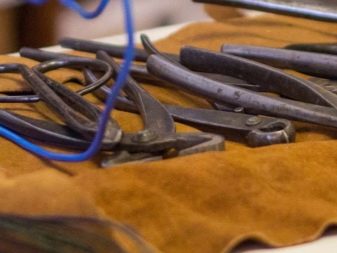
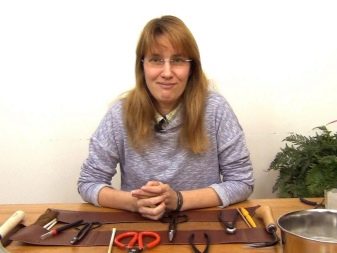
As additional components are required:
- moss to regulate soil moisture;
- stones that serve as decoration;
- copper wire to shape the trunk and branches.
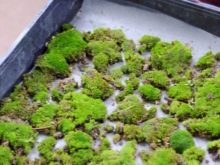
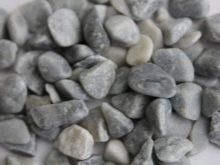

You can purchase ready-made bonsai kits from horticultural outlets.
How to plant correctly?
Before starting work, it is worth deciding on the choice of style for growing, since there are several of them:
- vertical - with an even trunk, thickened at the roots;
- inclined - the plant grows at a strong slope to the ground;
- multi-barreled - when several more small trunks grow from the main stem;
- cascading - the top of the plant bends below the soil level.
The first three options are suitable for creating oak bonsai. You also need to know that such a tree grows above 70 cm in height.
You can grow a low-growing oak with your own hands:
- from an acorn;
- from a seedling.

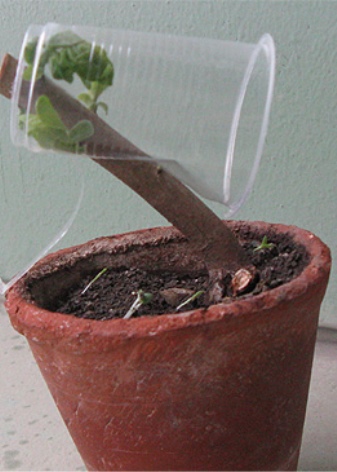
In early spring, in a park or forest near a mature oak tree, it is necessary to select several healthy, strong acorns without damage, since most of them may not take root. The fruits should be soaked in water: those that float should be thrown away - they are empty inside. Dry the rest in a well-ventilated place, but not in the sun. After drying, acorns should be stratified, that is, create conditions for them similar to natural ones: provide appropriate humidity and temperature.
This can be done in two ways. Place them in a plastic bag with moss, sawdust or vermiculite inside, which retain moisture. Then put the bag in a cool place: in the basement or on the bottom shelf of the refrigerator. It needs to be opened from time to time to allow fresh air to flow in, and water needs to be added periodically to maintain the humidity level. It is important to avoid excess moisture, otherwise the acorns will rot.
After the roots appear, acorns are planted in small containers, always with holes for the drainage of excess moisture. After about 2-3 weeks, the first leaves appear on the shoots.
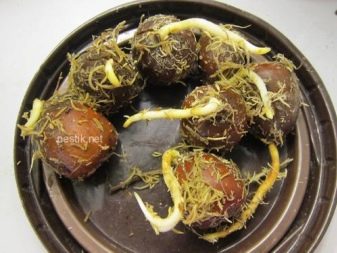
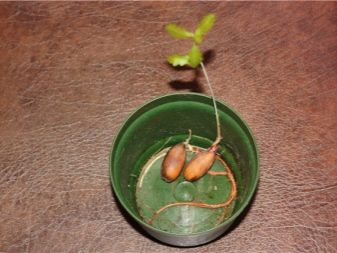
The second option is to plant oak fruits immediately in small cups filled with peat, and you need to put 2-3 things in a glass. Then they must be placed in the same conditions as in the previous method. In two months, the roots will appear.
You can transplant a plant to a permanent place with the following indicators:
- well developed central root;
- there are white roots;
- the height of the sprout is more than 15 cm.
The most optimal solution would be to plant a ready-made small seedling with healthy leaves and a height of about 15 cm. It must be carefully dug out without damaging the root system. Then the soil from the roots should be shaken off and rinsed with cold water. Using a sharp knife, cut off the main root obliquely, leaving only 5-7 cm.
You need to plant a plant in your native land, so it is collected near the oak, from which acorns or sprout were taken. The substrate is taken with fallen leaves and twigs, it is the best suited for bonsai. The drop tank should be spacious but not deep. A grate is placed in the dish at the bottom, drainage is poured, then sand mixed with fine gravel is put in a layer of 1 cm, and then earth is added. In this way, both a finished seedling and an acorn sprout are planted.
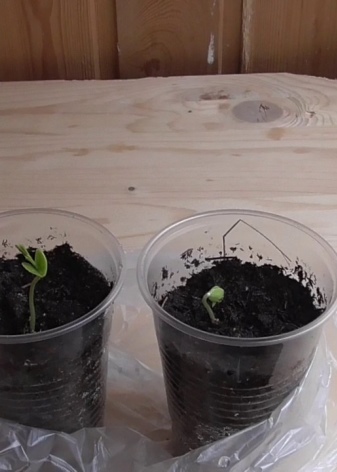
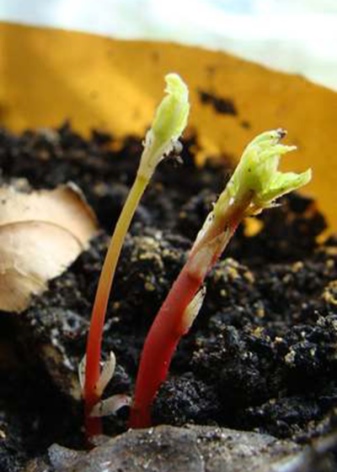
The soil is laid in the form of a slide so that moisture does not accumulate at the roots.
In about a month and a half or two, it will be noticeable whether the plant has taken root. With a positive result, you can start shaping your appearance. To give the trunk a graceful curved shape, you need to wrap the wire around the tree with one turn and fix it on the outside of the dish. It is pulled slightly to give the plant a bend.
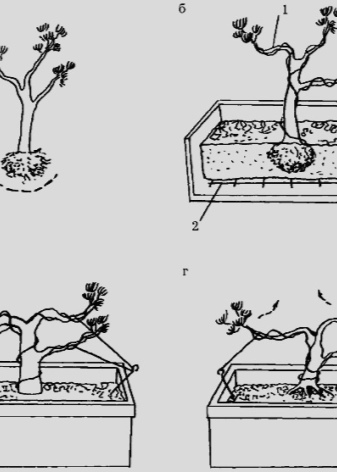
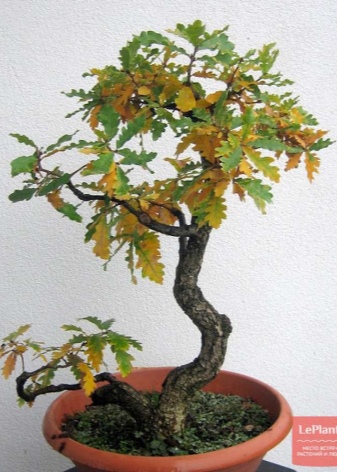
Care rules
- After the growth of young shoots, you can proceed to creating a crown. Excessive branches are removed with a sharp knife or pruner, and the remaining ones are bent using a wire, under which scraps of fabric are underlain.
- To give the trunk a spectacular knotty, the bark is selectively cut off with a blade. The branches are also cut off, leaving shoots that grow horizontally so that the crown grows in width.
- Systematic pruning slows down the growth of oak. For this purpose, transverse cuts are also used in different places of the trunk for the juice to flow out. All sections must be treated with garden varnish so that there is no decay.
- The leaves that appear should be cut in half so that there is no dissonance with a small tree. In addition, this measure also inhibits the growth of the oak. Over time, the leaves will themselves become smaller, and eventually the inconsistency will disappear.
- In the fall, stunted plants also lose their foliage, like their counterparts in the natural environment. The plant can be placed on the balcony and the wire removed. In winter, oak bonsai feels good in a cold place, at which time watering is stopped.
- During the growing season, the tree needs good lighting, and moisture is carried out as the soil dries out. To avoid drying out, the roots of the oak are covered with moss, which retains moisture.
- Like any other plant, it needs fertilizers, but unlike the rest, not for growth, but for strengthening and thickening the stem. Therefore, it is advisable to use organic or special feeding.
- Temperature and humidity do not really matter, but fresh air is essential. In a room with poor ventilation, oak can suffer from fungal diseases.
- The tree is transplanted about once every 2-3 years, while the grown roots are cut off and insignificant roots up to 10-15 cm long are left. This procedure significantly slows down the growth of the plant.
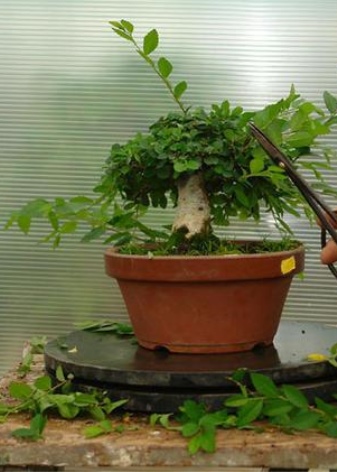
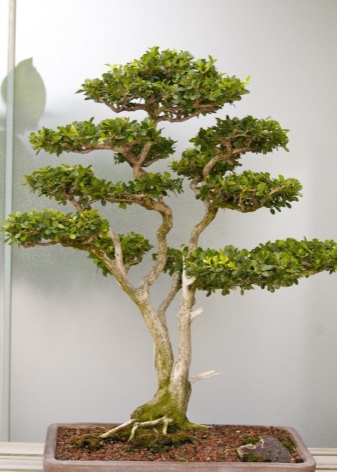
Growing bonsai from oak is a difficult and time-consuming process. But the result is worth all the effort and time spent. Such a plant will surely become a decoration of any interior.
For information on how to form an oak bonsai crown, see the next video.































The comment was sent successfully.